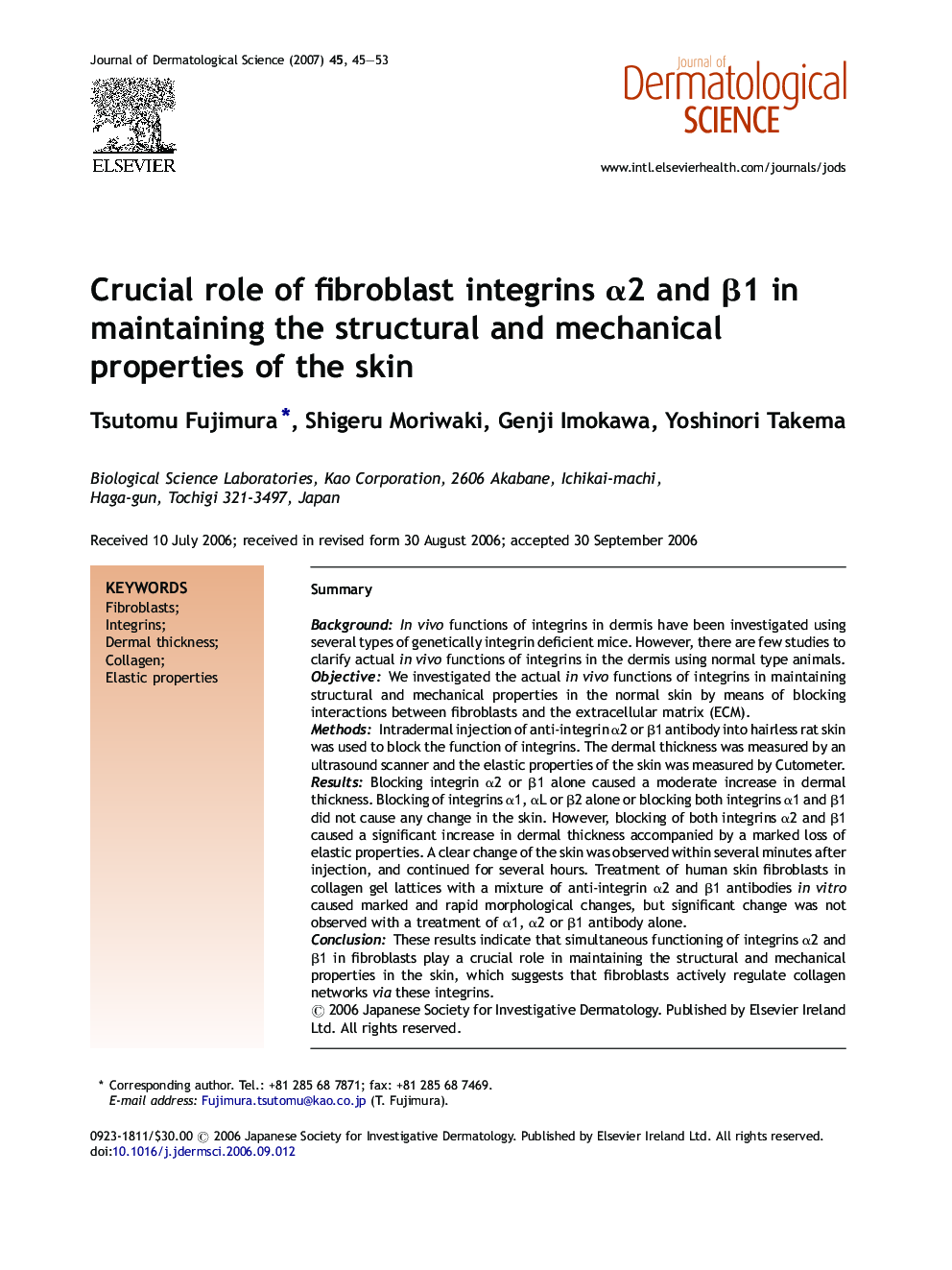| Article ID | Journal | Published Year | Pages | File Type |
|---|---|---|---|---|
| 3214343 | Journal of Dermatological Science | 2007 | 9 Pages |
SummaryBackgroundIn vivo functions of integrins in dermis have been investigated using several types of genetically integrin deficient mice. However, there are few studies to clarify actual in vivo functions of integrins in the dermis using normal type animals.ObjectiveWe investigated the actual in vivo functions of integrins in maintaining structural and mechanical properties in the normal skin by means of blocking interactions between fibroblasts and the extracellular matrix (ECM).MethodsIntradermal injection of anti-integrin α2 or β1 antibody into hairless rat skin was used to block the function of integrins. The dermal thickness was measured by an ultrasound scanner and the elastic properties of the skin was measured by Cutometer.ResultsBlocking integrin α2 or β1 alone caused a moderate increase in dermal thickness. Blocking of integrins α1, αL or β2 alone or blocking both integrins α1 and β1 did not cause any change in the skin. However, blocking of both integrins α2 and β1 caused a significant increase in dermal thickness accompanied by a marked loss of elastic properties. A clear change of the skin was observed within several minutes after injection, and continued for several hours. Treatment of human skin fibroblasts in collagen gel lattices with a mixture of anti-integrin α2 and β1 antibodies in vitro caused marked and rapid morphological changes, but significant change was not observed with a treatment of α1, α2 or β1 antibody alone.ConclusionThese results indicate that simultaneous functioning of integrins α2 and β1 in fibroblasts play a crucial role in maintaining the structural and mechanical properties in the skin, which suggests that fibroblasts actively regulate collagen networks via these integrins.
